THE HISTORY of the microphone should probably start in the year 1667 with Robert Hookes "Bull Roarer," a system similar to the two tin cans and a string that every kid interested in communication has tried at one time or another. However, while the period from 1667 to 1837 would show very little progress, the period from 1837 to 1876 would turn up experiments on practically every known microphone in use today, (some being set aside temporarily and later revived when other associated apparatus made them more feasible). The period from 1876 to 1900 spent primarily in developing loose-contact devices which evolved into carbon transmitters (or microphones) and the improving of these transmitters.
The term "microphone" was used by Wheatstone in 1827 to describe an acoustic device, by Berliner in 1877 to describe his loose-contact transmitter, and by Hughes in 1878 to describe his loose-contact devices. Aside from these few instances, the term "microphone" was generally associated with broadcasting and later with sound systems and motion pictures.
One of the first wireless transmissions of speech was in the summer of 1900. Using this as a starting point for broadcasting, we can consider the telephone transmitters of that era as our first microphones and thus establish a starting point for the development of the microphone. (See Fig. 1.). By the year 1900, over a million telephones had been manufactured and telephone parts were readily available to anyone who could afford to buy them.
The early radio experimenters used telephone transmitter elements on low-power radio transmitters but found that as they increased their radio power, the transmitter element (only able to handle 10 to 20 mA.) would get hot and burn up. The problem was the modulating of the r. f. energy with the microphone in the antenna circuit. It was obvious that if they wanted to increase their radio power using this technique they would have to develop microphones capable of handling much more current. Some followed this line and came up with some mighty unusual microphones. One early high-current microphone was made up of 25 Berliner microphones, each coupled to a metal tube and all these tubes gathering into one large mouthpiece. (See Fig. 2.) Another used a larger than usual microphone element with forced air cooling via a fan mounted under the microphone. (See Fig. 3.) A third used water cooking, and a fourth used a process of continual granule replacement. (See Fig. 4.) Some of these microphones were capable of handling currents up to 15A.
[*Editor's Note: Mr. Paquette is assembling a history and museum of microphones, and presently has more than 300 different models in his collection of U.S.-made mikes. He also collects literature, catalogs, spec. sheets, etc. relating to mikes, and he believes that his collection is the most complete in the country. He welcomes offers of any additional microphones or literature, and he can be contacted at Select Sound Service, 443 No. 31st Street, Milwaukee, Wisc. 53208.]
Needless to say, they were large and cumbersome. Meanwhile, others were improving modulation circuits which eventually made it possible to use telephone transmitter elements in the same way that they were used in telephone circuits. (See Fig. 5.) Western Electric was the largest manufacturer of telephone apparatus and consequently the most qualified to develop and improve microphones and associated apparatus. From 1915 to 1920 the most popular microphone was probably the W. E. candlestick telephone, less receiver.
It wasn't too long before they removed the receiver hanger assembly and replaced it with a push lever, giving us a push-to-talk desk microphone. (See Fig. 6.) This same phone was further modified by removing the base, shortening the stem and installing a plug in the end of the stem with a hole for the cord, thus giving us a hand mike. (See Fig. 7.) One of the first microphones designed specifically as a mike was the Western Electric D14298 or MW10B. (See Fig. 8.) The patent for this mike was applied for in 1913. It was designed to Army Signal Corps specifications for air-to ground communications. Since it was to be used in open aircraft, it was designed to be directional, or as the advertising of that day put it, "will not detect any sound waves except those directed straight into the microphone." This microphone was used during WW I and later became a surplus item. Many radio amateurs, experimenters, and early broadcasters modified them by removing the breastplate and straps and using them as hand mike or making a small base and using them as desk mike.
Magnavox produced a similar mike for Navy aircraft around the same time and later advertised it as "a notable win-the-war invention." Their advertising quoted Acting Secretary Roosevelt as saying "a special feature of the telephone sets is the anti-noise microphone, which is so constructed that the engine noises are not heard. This is accomplished by having the back of the microphone open.
The exterior sound waves strike the back as hard as the face of the diaphragm, and therefore the effect is neutral.
The voice waves strike only the face of the diaphragm, and the radio sets receive enough effect to modulate the transmitted wave." The invention of the Audion and the development of the audio amplifier between 1906 and 1915 resulted in more experimentation on previous ideas and new microphones began to emerge. In 1916 the condenser and in 1917 the crystal microphones were developed. The crystal at this time was a very specialized microphone for an underwater project similar to sonar. The first commercial use of a condenser microphone was in the sound system setup for President Harding's Inauguration on March 19, 1921. This was the Western Electric 394 condenser element, later to be used in their 47A, 7A, 8A, 9A, and 10A amplifiers and housings. (See Fig. 9.)
============
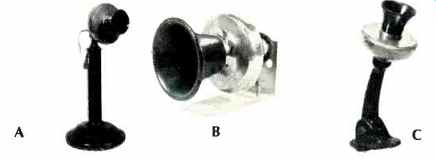
Fig. 1-A, American Bell Telephone Model 299 on 1915 candlestick stand; B,
Berliner transmitter, and C, Century Telephone Construction Co. mike, off
of box telephone.
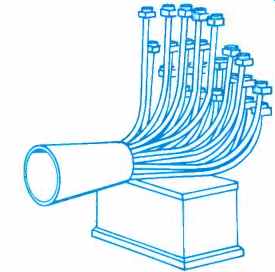
Fig. 2-C. Lorenz Co. multiple transmitter (after Wireless Age). Below left.
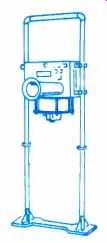
Fig. 3-Heavy-current Berliner microphone transmitter with fan cooling (after
Wireless Age). Above right.
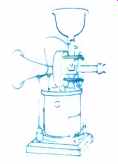
Fig. 4-Scheidt-Boon Marzi high-current microphone transmitter (after Wireless
Age).
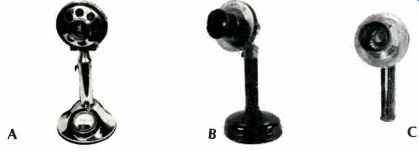
Fig. 5-Three mikes capable of 2 1/2 amp currents: A, B, Electra Voice, and C, Universal High-Frower Telephone Co.

Fig. 6-Western Electric 323 on candlestick stand with push-to-talk switch.
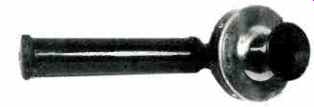
Fig. 7-Western Electric 323 hand mike.
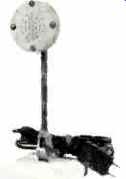
Fig. 8-Western Electric D14298 or MW10B.
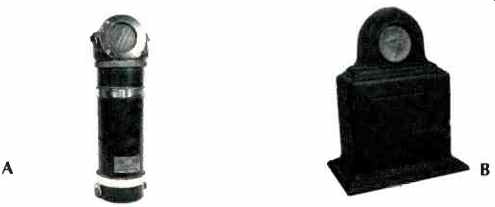
Fig. 9-A, Western Electric 47A condenser, and B, Western Electric 7A condenser.
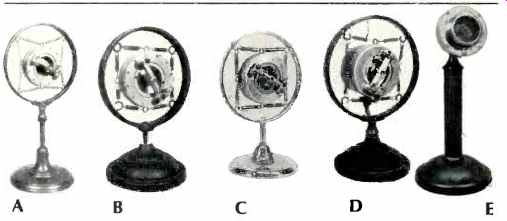
Fig. 10-Five Western Electric spring-mounts: A, 373W; B, 387W; C, 387; D,
600A with hiss filter, and E, 1441CD with 389 element.
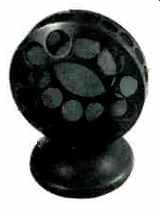
Fig. 11-Western Electric 1B housing.
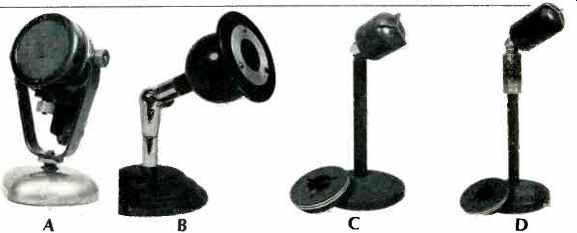
Fig. 13-Four Western C, 632C, and D, 633A. Electric mikes: A, 618A; B, 630A;
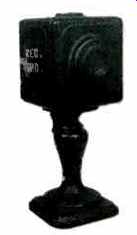
Fig. 12-RCA 4A box condenser on announce stand.
============
The carbon microphones used up to 1920 were single button microphones. In 1920 Western Electric introduced a double-button carbon mike with a stretched diaphragm, which improved sound quality, as frequency response was extended, resonant peaks smoothed out, and harmonic distortion reduced considerably. One minor disadvantage was the reduced sensitivity which required a little more amplification. The first model was the 373W, followed by the improved 387W and 387. Then came the 389 which was smaller in size and fit into a candlestick stand. This was called the 1441CJ announce mike. The last mike in this group was the 600A, identical in size to the 373 or 387, and with more improvements. (See Fig. 10.) A Model 41A hiss filter fastened on the back of any of these three. Aside from the 389, all were spring mounted in rings, though housings were available to give them a more finished appearance.
The most popular of these were the 1A and 1B housings.
The only difference between these two is that the 1A came with a three-wire cord attached. (See Fig. 11.) The early carbon mikes had many problems-if they were moved or jostled while in operation, arcing would occur within the granules and against the diaphragm, the result being a deterioration in performance and a shorter time between granule and diaphragm replacement, and in extreme cases the carbon granules could fuse together rendering the mike inoperative. If the mike sat in one place too long or if the granules absorbed moisture, they would pack and result in very little output. The studio engineer would usually tell the people using the mikes to keep an eye on him in the control room, so that if the mike stopped working he could signal them to give it a few quick shakes to loosen it up.
These mikes could only be used in a vertical position and since the diaphragm was easy to get at in most units, they had to be handled with care. The diaphragm, being stretched and under tension, could split if touched with a sharp object.
The diaphragms in the Western Electric double-button mikes were made of two-mil duralumin and the condensers used one-mil duralumin. To replace the diaphragm and carbon granules in a mike of this type took a minimum of 21 hours. The double-button carbon mike was the standard of the broadcast industry from 1921 to about 1931 and many were still being used up to 1940. In the early 20s Western Electric was the only company producing quality microphones and purchasing one from them was quite difficult. They sold complete systems which included a mike or two, but rarely sold an individual mike except under special circumstances. The situation seemed to get worse in the mid-twenties when Western Electric developed their talking motion picture and a new method of electrical recording and reproduction of phonograph records. They licensed Warner Bros. in the motion picture process and Columbia and Victor in the recording process.
This gave them the opportunity to lease practically everything they produced.
Dr. Phillip Thomas of the Westinghouse Laboratories developed a glow discharge mike in 1923 and used it on station KDKA for a while. Apparently there were problems with it since it never got into production.
In about 1923 or 1924, RCA was selling a double-button carbon mike made by Kellog, which wasn't as good as the Western Electric's but was probably the next best available.
Kellog also sold them to others and helped to fill the demand for mikes.
In 1924 RCA introduced their 3A box condenser mike, which did not measure up to the quality Western Electric condensers but was available to anyone and it became very popular. It's main problem was that it was very noisy. The original design used 199-type tubes that were inherently microphonic, creating a very noisy mike whenever it was touched, bumped, or vibrated. This problem was solved when they redesigned the circuit to use UX864-type tubes.
The new model 4A was a vast improvement over the 3A but still didn't meet the standards of the Western Electric condensers with their quieter liquid resistors and more stable gas-filled condenser head. (See Fig. 12.) Replacing diaphragms in these early condensers was also quite a project, particularly in the Western Electric which took about six hours.
Between 1920 and 1927 Western Electric and RCA were the only big companies producing many microphones, but these were nowhere near enough to supply the expanding broadcasting, sound and recording industries, not to mention amateur radio people. The prices paid for these mikes were higher than the amateur or sound shop could afford, so microphone companies popped up all over to supply the demand for lower-priced mikes. Ellis, Shure, Electro-Voice, American, Universal, Gavit, Astatic, Jenkins Adair, Remler, Amperite, Lifetime, Bruno Gibbs, Seco, Amplion, Brush, Bud, Connecticut, Chrisell Acoustic, Electro Acoustic, Federal, Frost, Miles Reproducers, Radio Receptor, Sampson, Telephonics, Thomaston Labs, Transducer Corp, Turner, and E.F. Johnson were some of the companies that produced mikes in the later 20s and the early 30s. Most of these companies produced a cheaper version of the same types of microphones already being marketed.
The year 1931 was the start of a new era in microphone development, as Western Electric introduced their moving coil microphone, RCA their ribbon velocity microphone, and Brush their Rochelle-salt crystal microphone.
Western Electric's first moving coil mike was the 618A, followed by their 630A, 632A, 632C, and 633. Because of their appearance, the 632C and 633 were nicknamed the "saltshakers." (See Fig. 13.) RCA's first ribbon velocity was their Model 44, a large cylinder containing a preamplifier with the ribbon element hanging from the bottom of the cylinder in a separate, perforated housing. This unit was first sold to their photo phone franchise holders for motion picture work. One trade journal of that time said, "the new mike will give to photophone franchise holders at West Coast studios the same advantages for noise elimination as those accorded Western Electric when the latter, in December, completed development of its new `noiseless recording system', now in use at practically all Hollywood studios using Erpi sound systems." This was in reference to the Western Electric 618A moving-coil mike.
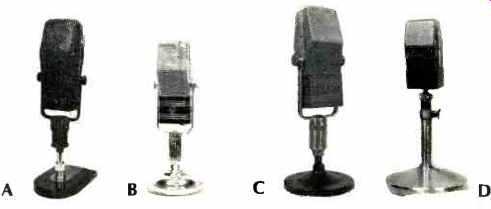
Fig. 14-Four RCA mikes: A, 44A; B, 44B; C, 44BX, and D, 74B.
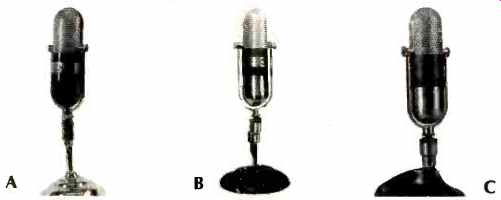
Fig. 16-Three RCA mikes: A, 77B; B, 77D; and C, 77DX.
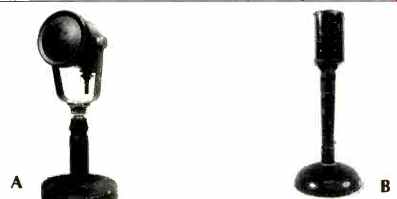
Fig. 17-Two RCA mikes: A, 50A, and B, SK45.
The 44 was followed by the 44A and 44B and later by the 44BX. These three models were excellent microphones and were probably the most popular mikes used in radio in the later 30s and throughout the 40s. The 44A was antique bronze, the 44B was black with a chrome screen and chrome fittings, and the 44BX was beige with chrome screen and fittings. All were quite large and weighed 81/2 lbs. each. A later model, the 74B, was much smaller and only weighed 21/2 lbs. This mike was referred to as the "Junior Velocity" and its response characteristics were much less than the 44 series. (See Fig. 14.) Our very definite advantage of the ribbon mike was its figure eight or bi-directional pickup pattern. Being dead from the sides, top, and bottom, this mike could be positioned to eliminate studio sounds, noises, and reverberation.
In motion picture work camera noise was always a problem, and special "blimps," sound proof booths, and baffles used to quiet these sounds could be eliminated by positioning a ribbon mike properly.
In 1934 RCA introduced the 77A microphone which went a step further in directional characteristics and is the first uni-directional or cardioid pattern microphone. By using a ribbon clampled down in the center and using the upper half of the ribbon with the back enclosed and controlled, this upper ribbon became a pressure type mike. The combination of the pressure and velocity made the cardiod pattern possible. (See Fig. 15.) This mike was followed by the 77B, 77D, and the 77DX, each of these mikes being an improvement over the previous model. (See Fig. 16.) Another old ribbon velocity mike made by RCA was the 1-0001. Specifically designed for boom use, it was a sphere about 7-in.
diameter and nicknamed the "skunk mike" as it was all black with a white stripe down the perforations in the case.
Although the ribbon mike had very definite advantages over the moving-coil type, they also had some disadvantages. If you tried to work the mike too close, it would be come very boomy due to proximity effect. In later ribbon mikes, equalizers were built in with a switch labeled "voice"-"music" to take care of this problem. It also required a special windscreen if it was to be used on a boom or moved while being used. For the same reason, outdoor use of this mike without a windscreen was virtually impossible if there was any wind at all. A light breeze across the ribbon would create thunder in the speakers rivaled only by a good storm.
For public address work where you had little control over the user, it was a disaster. Asking people not to blow into a microphone seemed to be more of a challenge than a request. Invariably, some one would blow into it and destroy the ribbon.
Replacing a ribbon is not a hard job but it is an exacting and tedious job, requiring a clean area with no air movement (including heavy breathing), non-magnetic screwdrivers and tweezers, a little spit, a toothpick, a magnifying glass, scotch tape, and plenty of patience.
RCA introduced another type microphone in 1935; it was called an "inductor" mike and the first model was the 50A. This was actually a pressure mike but used a type of construction very similar to the ribbon. A single 0.010-in. conductor was rigidly coupled to a diaphragm and located between the poles of a permanent magnet with its length perpendicular to the magnetic lines of force. Its performance was quite similar to the moving-coil mikes. It was later followed by the SK45, also an inductor mike used primarily for announcing or paging. (See Fig. 17.) Crystal mikes were of two basic types, the diaphragm and the sound cell. The diaphragm type was economical to make, had high output voltage and fair frequency response.
The sound cell was more expensive, had low output voltage, and an excellent frequency response. The diaphragm type became very popular with amateurs and P.A. operators.
The sound cell types were used more in radio stations and recording studios; however, having extremely high impedance, they were soon considered obsolete for studio use.
The losses in high impedance cable were critical as cable length increased and became more susceptible to hum and noise pickup. The studios began to standardize on low impedance microphone input circuitry, which meant that a crystal mike needed a matching transformer. As this occurred, the quality of the moving coil or dynamic mikes improved and the crystal mikes began to disappear from the studio scene. Another factor influencing this disappearance was that the crystal mikes were more fragile and susceptible to heat and moisture. Many microphones were destroyed on automobile seats with the sun shining into the auto, or in the sun on a windowsill in the studio. Also, if a crystal mike was stored for a long time in a very humid place, the crystal would begin to decompose.
The Brush Development Co. held all the patents on crystal devices and produced a line of microphones. (See Fig. 18.) They also licensed many other companies to use their patents so crystal mikes were very plentiful for many years.
RCA's uni-directional mike solved many noise and feedback problems, and the other mike companies had to follow
up with a similar type mike. In 1937 Shure Bros. came out with their tri-polar mike, the 720A, which was a crystal mike using a special pressure-gradient crystal along with a regular pressure element. In 1939 both Shure and Western Electric came out with uni-directional mikes. Shure Models 55 and 555 used a single dynamic element and an acoustical network with the patented name "uniphase." Western Electric's 639A was a two-element (ribbon and dynamic)
microphone with three patterns like the Shure 720A, figure eight, omni, and cardioid (uni-directional). Later, Turner had their 101A, and E. V. had their 725 cardak, and American their D9. Western Electric-added three more patterns to their 639A and called it a 639B, then took the same mike and changed the housing to improve the high-end frequency response and make it less vulnerable to shock for motion picture production. This mike was given the model number RA1142.
In 1937 Western Electric introduced a tubular-type directional microphone. This mike was designed for long-range pickup and was first used to cover the 1937 American Legion Parade in New York City. It consisted of the Model 618A pressure-type mike coupled to their D99098 impedance element which consisted of 55 aluminum alloy tubes whose lengths varied by equal amounts from 11/4 in. to 5 ft. When this mike was used to cover the parade, it was located on the sixth floor roof of the Empire State Building overlooking Fifth Avenue and was able to pick up any one of three bands playing different music at the same time.
In 1939 RCA developed a very similar mike, and these mikes were given various nicknames such as machine-gun mike, shot-gun mike, and rifle mike.
Another company that developed a different type of microphone was Bruno Laboratories, Inc. This company specialized in velocity-type microphones. They produced the standard magnetic-ribbon velocity mikes under an agreement with Western Electric but also produced an electrostatic-type velocity mike on which they held patents.
This microphone required a polarizing voltage from 150 V d.c. to 350 V d.c. Some models had a frequency response of 30 to 14,000 Hz. using a polarizing voltage of 350 V. As the polarizing voltage was reduced, the high end of the frequency response fell off. These mikes went under the trade name of "Velotron" and were high impedance devices. In 1939 Bruno developed a no-voltage Velotron, which was a forerunner of the present day electrets. They used a coating of carnauba wax which was subjected to a high voltage charge and supposedly held this charge indefinitely. A few years after producing this mike Bruno Labs. Inc. was no longer in business. I've often wondered if this mike continued to work after a few years and if not, whether this was why Bruno went out of business.
This use of the electret principle by Bruno was not the first. The Japanese had experimented with it as early as 1928 and used an electret in their walky-talkies in WW II. An American had also filed for a patent on a mike of this type in 1931 and received it in 1935. Microphone development after 1940 until now has been primarily in improving existing types and developing mikes for specific applications, directivity patterns, size and shape.
Although the double-button carbon mike with stretched diaphragm has disappeared, the single-button carbon is still used in telephones and wherever a rugged mike with restricted frequency range and high signal output is required.
The condenser mike, which became quite popular in the 20s and 30s and lost its popularity due to its cumbersome size, heavy cable, and power supplies, has made a comeback due to the new electrets that have none of these disadvantages and some new advantages over other mikes.
The ribbon velocity is still around although not as popular as the moving coil and condensers. The crystal mike lost its appeal in the sound cell type but grew rapidly in the diaphragm type, particularly in the 50s and 60s when every tape recorder sale included a crystal mike. The crystal mike evolved into the ceramic type for better climatic performance. Now that the electronic industry is almost all transistorized, the ceramic and crystal mike are losing favor again because of their high impedance characteristics.
Moving coil or pressure dynamics have constantly improved in all their characteristics, size, shape of directivity patterns, and rugged construction so that today they are the most popular of all the types.
We can now buy microphones for any audio application that we can dream up, regardless of shape, size, frequency response, and directivity pattern required. Now if only someone could come up with one that wouldn't go into acoustic feedback under any conditions.
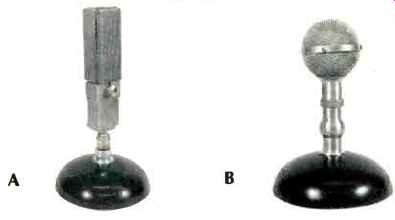
Fig. 18-Two Brush mikes: A, G2P2S, and B, BR2S.
(Source: Audio magazine, Dec. 1974; Bob Paquette)
Also see: Miking the PRO Way (Nov. 1977)
Microphone SENSITIVITY Ratings (Dec. 1976
= = = =
